Bananas appear to grow on trees, but they are the world’s largest herbaceous plants. They have large, green leaves and a terminal inflorescence with purple bracts on each plant that opens daily to make a bunch or hand of Banana fruit. The Banana rhizome is cut and propagated in the spring after the weather warms up and new plant growth emerges.

Banana plants grow well and need well-drained soil. Many varieties of Banana plants reach different sizes. Despite being a fairly straightforward process, there are some rules around planting and transplanting Banana trees that you must remember.
How to grow Banana from Rhizomes/Suckers to harvest
Do Banana trees grow from rhizomes?
- Bananas are easy to grow in any soil, usually do not require fertilizer, and are not affected by any major pest or disease problems. Bananas need to be planted in a place that receives direct sunlight for at least half a day or more. These are large plants that require a lot of space to spread.
- The underground stem of the Banana is called a rhizome which contains several buds. Each of these buds sprouts and forms its pseudo stem and a new bulbous rhizome. These daughter plants are called suckers. Bananas are propagated mainly by rhizomes and suckers.
- These pups look like small trees growing along the adult tree, small trees, but they are an offshoot from the roots of this tree. This means that they are the same plant attached to the roots.
- The corm or mother plant of the Banana plant continuously produces rhizomes or pups and survives for many years. Removing rhizomes from a corm and replanting them can give you an endless supply of Bananas.
How long do Bananas take to grow from rhizome?
- When you plant rhizome, the time from shooting to fruiting is usually 180 days, depending on the cultivar, temperature, and soil moisture.
- Banana plants grow fast and reach their full height of 20 to 40 feet in just nine months. A good crown of leaves is produced in the plant after growing for about 6 to 8 months. Then a flowery stem emerges from the top, and a large bud begins to form. Banana plant rhizomes take 10 to 15 months to produce flower stalks and fruits.
- When it’s harvesting time, the plant stem is cut. An offshoot emerges from below and is called a sucker. A new plant emerges from this sucker, which usually produces a new bunch of Bananas within 12 to 18 months, depending on the climate.
- The Banana flower appears 10 to 18 months after planting, and then it takes another 80 to 180 days for the flower to be ready to harvest Banana, depending on the season.
- Bananas usually take four to six months to reach full size after the fruit flowers, depending on the temperature, variety, humidity, and culture.
In case you missed it: 16 Common Banana Tree/Plant Problems: How to Fix Them, Solutions, and Treatment
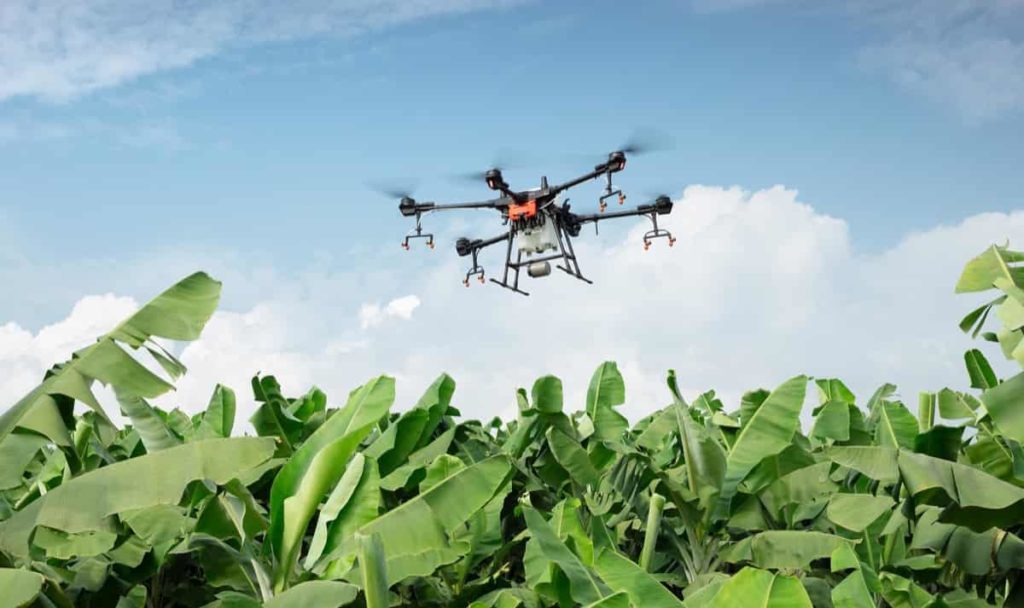
How much water do Banana trees need?
- Banana plants require several inches of water every 1 to 3 days, depending on the type. Potted Banana plants or dwarf Banana plants need water every day. Outdoor Banana plants need water every 2 to 3 days. Water your Banana tree whenever the top 1/2 inch of soil is dry to touch.
- The Banana plant’s water requirement is about 900 to 1200 millimeters for its entire life cycle and can be met through natural rainfall and supplementary irrigation.
- Bananas need regular water to retain large tropical leaves and produce delicious sweet fruits. You should water slowly and deeply every 2 or 3 days during the warmer months.
- Overwatered Banana plants may experience Banana root rot or another fungal disease. For a long time, your fruit tree may die as a result. It is essential that while providing excessive amounts of water, you take care not to make the soil soggy.
- Be sure to reduce water in the winter because, like most plants, the Banana plant does not like giving too much water. Outdoor Banana plants need water every 2 to 3 days. Water your Banana tree whenever the top 1/2 inch of soil is dry to touch. Banana plants suffered from too wet or too dry soil.
What is the best fertilizer for Banana trees?
- Like many other plants, Banana fertilizer requirements include nitrogen, phosphorus, and potassium. You can choose to use a regular balanced fertilizer that contains all the micro and secondary nutrients the plant needs or distribute the food according to the growing needs of the plant.
- The rapid growth rate of the Banana plant makes it a heavy feeder. A balanced fertilizer of 8-10-8 is recommended. If sufficient amounts of nitrogen, phosphorus, and potassium are provided, Banana trees will thrive in the growing season. Feed regularly using 8-10-8 chemical fertilizers or organic fertilizers. Since their fertilizer needs are unusually high, Banana trees’ most common problems are potassium and nitrogen deficiency.
- In the summer, fertilize your Banana trees with balanced organic manure once a month. After harvesting your Banana, cut your tree by about 30 inches and let the stem dry for two weeks before removing it. During the growing season, apply more nitrogen manure fertilizer once a month, then reduce it to half the food after the plant flowers.
- When fertilizing a mature Banana plant, use 680 grams of 8-10-10 monthly. For dwarf indoor plants, use half that amount.
How can I make my Banana grow faster?
- The Banana plant is sensitive to cold temperatures, so it is essential to protect it from frost and keep it at 19°C or more. Watering the Banana plant frequently and fertilizing it can help it grow faster. In addition, Banana trees that are grown outdoors are likely to grow faster with sufficient space than an indoor variety. You can plant Banana trees in groups of three or more or use acidic soil, which is between 5.5.
- You should plant the Banana tree in dark, nutritious soil to get the largest fruit. Use composted manure and organic mulch frequently to add nutrients to the soil because the more nutrients in the plant, the larger the Bananas will produce.
In case you missed it: How to Prepare the Soil for Banana Plants: Best Soil Mix, pH, Compost, and Recipe
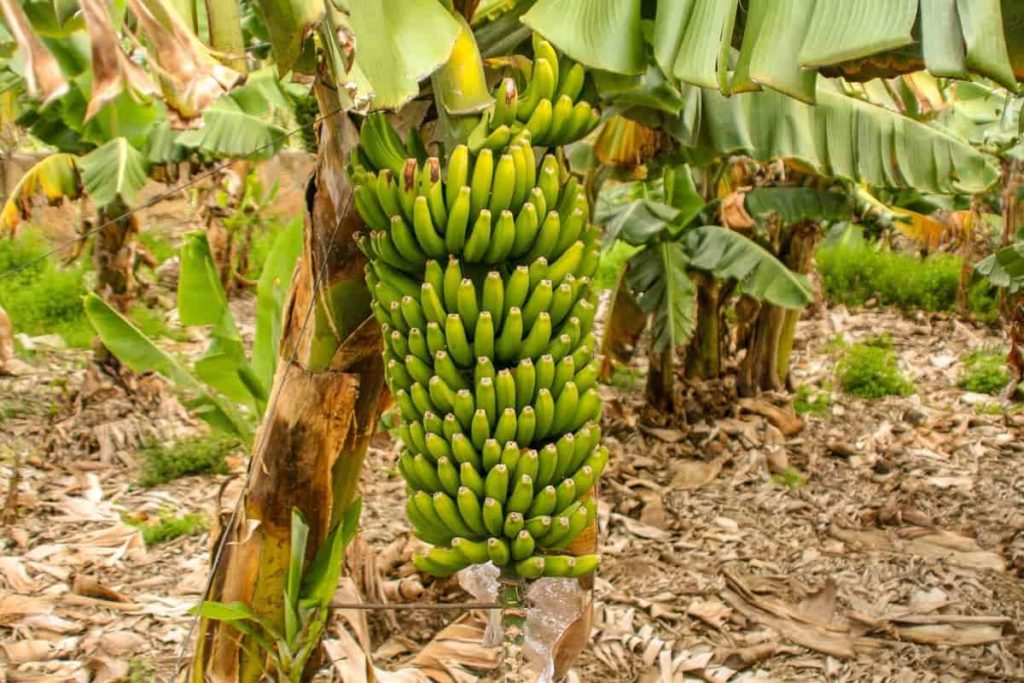
Should I cut off Banana flower?
- Removing the Banana flower causes absorbs more nutrients to the Banana bunch than the Banana tree, thus strengthening its growth.
- You must wait 15 days for the last Banana bunch shape to remove from the Banana tree. You can cut it more easily after reaching an average length of 15 centimeters between the Banana flower and the last Banana bunch.
- Wait until the flower stalk has a thick fruit that is full-sized but still green before you cut the rest of the flower stalk.
How many times does a Banana tree bear fruit?
Each stem of a Banana plant only bears fruit once. However, the plant itself will survive. Whatever suckers your tree has planted will grow and bear fruit. The stem that has just finished fruit can be cut and given to the next stem room to grow and help your plant conserve energy.
Why is my Banana plant not fruiting?
- The Banana tree needs around 18 months to bear flowers. During this period, it needs a good amount of nutrients, 6 to 8 hours of daily sunlight, and a lot of water and soil with your care. If none of these are available, the tree will grow but will not flourish. So, if your Banana tree isn’t blooming or bearing no fruit, there may be a few reasons.
- For growing Banana trees, if the soil quality is not up to the mark, it can cause the blooming process to slow down. The ideal soil for growing Banana trees should be rich in organic matter and devoid of salinity. The ideal soil pH range should be between 6 to 7 for growing Bananas.
- Banana plants need continuous warmth to bear fruit. The plant can survive but will not bear any fruit if the surrounding temperature drops below 10°C.
How many Bananas can a tree produce?
- Each bunch grows 9 to 12 hands, which means one Banana plant can produce up to 240 Bananas. The Banana plant produces only a bunch of Bananas. When it’s harvesting time, the plant stem is cut. An offshoot emerges from below and is called a sucker.
- Banana trees can produce more than 200 Bananas per bunch in a year. Bananas are technically herbs, and each stem can produce a bunch of Bananas made up of hands Bananas. There are about 10 to 20 Bananas on each hand. Each bunch can extend ten or more hands in each. Each Banana is called a finger and can be separated from the bunch once picked.
Do you need 2 Banana trees to get fruit?
The dwarf Cavendish Banana trees are self-pollinated, which means they don’t need any other trees nearby to help produce fruit. However, more than one Banana tree can increase your crop yield. Banana trees grow well in heat and humidity, so when you plant two Banana trees together, they pack in heat and humidity.
In case you missed it: Guide to Growing Red Banana in Home Garden: Planting and Care
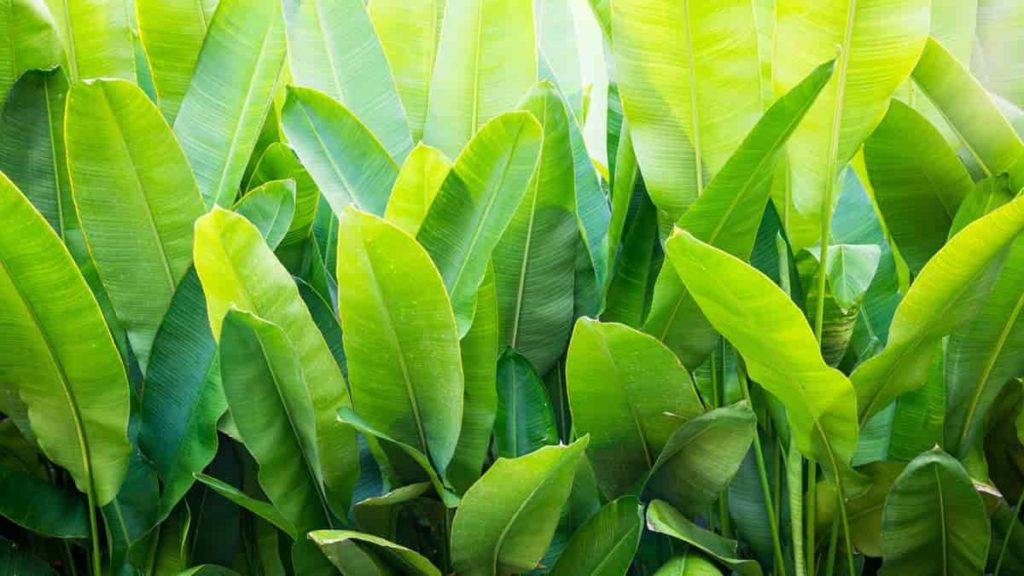
Why do Banana leaves turn yellow?
- Banana leaves that are turning yellow and dying indicate that the tree is not getting the nutrients it needs. Inadequate fertilization, excess water, and fungal infection are common causes of nutrient deficiencies in Banana trees.
- Banana leaves will turn yellow with too much water, disease, or cold. Don’t worry if you need to cut the dead leaves of your Banana plant. Removing damaged, diseased, yellow, or dead leaves from the Banana tree is necessary to keep them healthy.
- The yellowing of the leaves several times indicates a lot of moisture. You don’t seem to be more than water, but maybe your soil isn’t coming out well. Also, Bananas are like very loamy soil.
When should Banana trees be pruned?
- It needs a little preparation for winter in the fall to keep its Banana plant happy. You should cut the tree about a foot long before or after the first frost. You should cut the stem at an angle so that water doesn’t accumulate all winter and the crown starts to rot.
- You should trim dead leaves from a Banana tree to encourage growth and maintain a beautiful shape. When the Banana tree is not getting enough water, the leaves can dry up and turn brown and cannot be revived.
- After harvesting your Banana, cut your tree by about 30 inches and let the stem dry for two weeks before removing it. Banana stalks produce fruit only once, so they must be cut back for new fruits to grow.
Should I put mulch around my Banana tree?
- Banana plants require heavy mulching, which helps maintain water and moisture, inhibit the growth of weeds and acidify the soil. When the mulch breaks, it releases nitrogen into the soil.
- Before the first frost, cut back leaves, leaving 8 to 10 inches above the ground. Hardy Bananas would then need a good heavy mulch over the top of the rest of the crown. Based on the size of your Banana tree, this mulch pile can be several feet high.
- Shredded bark and wood chips are good mulch for Banana plants. Mulch retains soil moisture, reduces weed growth, and provides slow-release organic nutrients to the plant.
Do Bananas like full sun?
- You should plant Banana plants in full sunshine for the best growth and fruit production. However, Banana plants tolerate a light shade. You should select a place in the landscape away from other trees, buildings, structures, and power lines.
- Most Banana trees prefer full sun, although some varieties with different leaves will require a little shade to avoid leaf scorch.
- Most Banana plants prefer to grow in full sunlight, that is, at least six hours of direct sunlight on most days. However, some types can easily scorch and work better in partial shade.
- Too much direct sun can scorch the Banana leaves. Scorched leaves can slowly kill your Banana plant or hamper its growth.
Why do they put blue bags on Bananas?
- Using a blue ripening bag can improve fruit quality, increase yield and reduce ripening time. The ripe fruit gives a gas, which in turn accelerates the speed of ripening of the rest of the fruit.
- Leave the protective cover until you have harvested the bunch of Bananas. After harvesting, you should store your Banana in storage rooms with 90 to 95% relative humidity and a temperature of about 15°C to 23°C. This will make them completely ripe.
- Some bags, mainly used by commercial farmers, are irrigated with pesticides to protect Banana crops. These bunch covers or Banana bags protect Bananas and other fruits from pathogens, air, birds, sun damage, scarring, and damage during harvesting.
In case you missed it: Best Fertilizer for Banana Plants: Schedule, Organic, Natural, and Npk
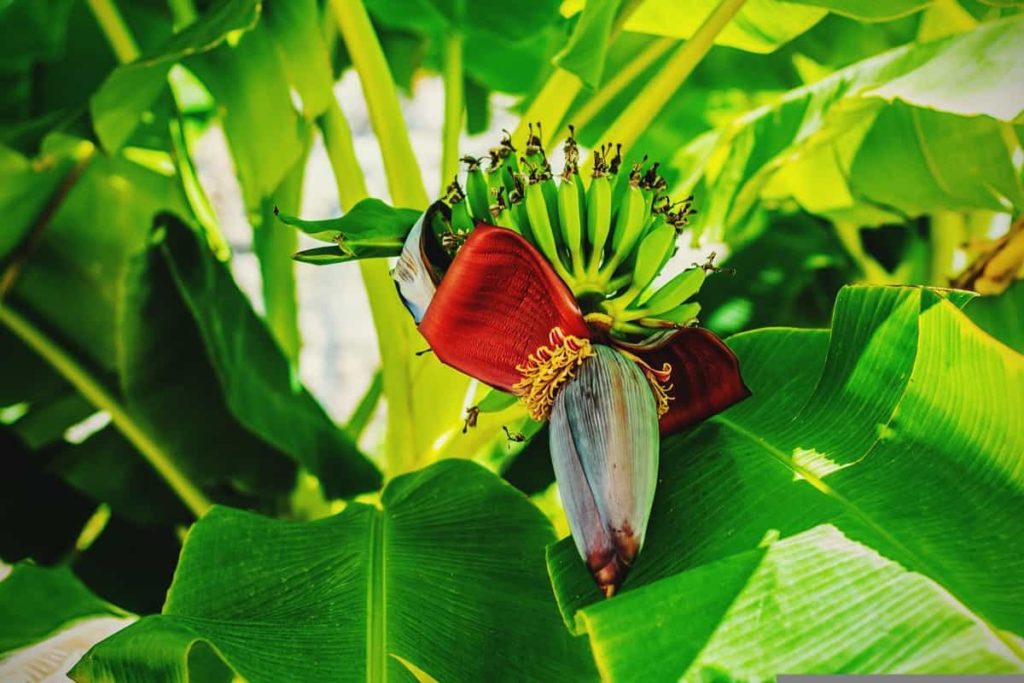
What happens if you pick Bananas too early?
- Prematurely selected Bananas that don’t have time to ripen, don’t taste great; they can taste slimy and strange. They can also be challenging to digest and have an unpleasant eating experience.
- Green Bananas will ripen very reliably after picking. If they are very green, they haven’t found enough ethylene gas to speed up the ripening process, but they’ll ripen naturally. It may take up to 6 weeks.
What are stages of a Banana plant?
- There are many growth stages, from Banana planting to fruiting and harvesting. Banana production is a long process, and Banana plants grow in three stages: the vegetative stage, the flowering stage, and the fruiting stage.
- There are three stages of the Banana growth cycle: vegetative growth (6 months), flowering (3 months), and fruit stage (3 months). This means that the time between planting a Banana plant and a Banana bunch crop ranges from 9 to 18 months, depending on the variety of growing and growing conditions.
Should you remove Banana pups?
- Separating Banana plants will give both new pups and parents a better chance of survival, as new pups can take away water and nutrients from the parent plant, causing it to die back. You should divide the Banana pup when the pup has grown to at least one foot.
- Before you start, ensure the main Banana plant is healthy and has at least three or four good-sized offshoots to anchor it in the soil. The most crucial step is choosing a large enough pup to survive when separated from the mother plant.
What soil do Banana trees like?
- Banana trees need a slightly acidic soil with a pH of 5.5 to 6.5. Because of the quantity and size of their leaves, Banana trees are very heavy feeders.
- Banana trees thrive in more acidic soils with a pH of 5.5 to 6.5, so ensure the soil is well drained and rocky. Any soil with volcanic rock or sand is perfect for Banana plant growth.
- Bananas can grow in the poorest of the richest types of soil with varying successes. The soil should have good drainage, proper fertility, and moisture. Deep, rich loamy, and salty clay loam soil with a pH between 6 to 7.5 are the most preferred for Banana cultivation. Dig the hole deep enough and wide enough so that the root system has enough room to spread easily.
What could increase Banana production?
- Banana needs calcium to ensure vigorous root, leaf, and sucker development, thus providing a high yield. Magnesium and sulfur directly affect production, increasing the number and weight of fruits per Banana bunch.
- You can manage ground and soil water by adjusting drainage and infiltration. You should improve soil structure by adding organic matter. Monitor the condition of crop and soil water and schedule irrigation accordingly.
What causes Banana tree leaves to split?
Large leafy plants like Birds of Paradise and Bananas have leaves designed to split in response to strong winds. If your plant is a large leafy variety, leaf splitting can be normal, especially in rooms with fans or many natural airflows. Removing damaged, diseased, yellow, or dead leaves from the Banana tree is necessary to keep them healthy.
In case you missed it: Banana Planting Questions and Answers – (FAQs)
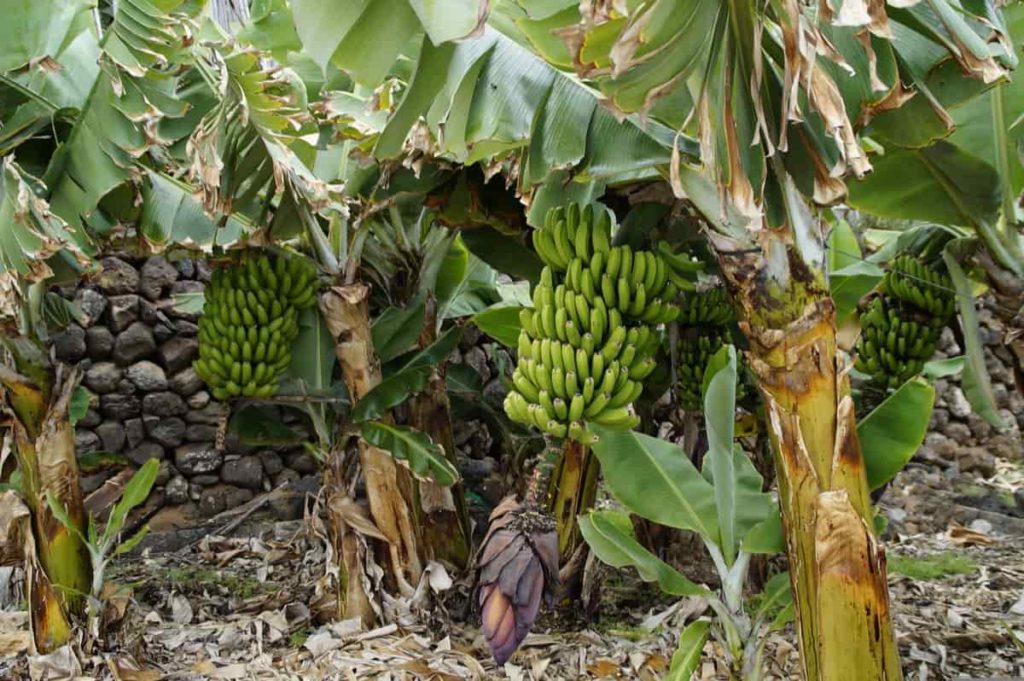
What do you do with a Banana tree in the winter?
You should plant a Banana rhizome in a container filled with moist sand and store it in an area that will not fall below 10°C. Stop watering or fertilizing and let the plant go dormant. In the spring, you can replant your Banana tree in the garden after the last frost date in your area. You should mulch over the ground and store them in containers in a cool, dark place for winter, giving it very little water.
Can Banana grow in pots?
- You will need to use the dwarf variety to grow a Banana tree in a container. Regular Banana trees can be too large for pots. Use a six or 8-inch pot with a drainage hole, as Banana trees thrive in well-drained soil. Your soil should be mildly acidic and a good combination of peat, perlite, and vermiculite.
- You can grow Bananas in containers, but the size of the pot must be at least 15 gallons for optimal growth. You can replant it in a large container when the Banana tree overtakes the container. If a plant becomes too large to repot again easily, you can reduce the height of the stem, but ideally, leave at least 2 feet. Bananas usually don’t need pruning.
How much root space do Banana trees need?
- Planting a Banana tree in early spring is better. You dig a hole that must be measured 1.5 feet wide at about 1.5 feet. It may seem large for a small Banana plant, but it will allow the roots to spread easily in the first year of development.
- The Banana tree roots can spread up to 5 feet deep and 30 feet wide. Many only grow to about 18 inches, but in suitable soil, they are known to reach a depth of 5 feet. Most varieties require at least 12 feet or more space. Smaller varieties can be planted at a distance of 10 to 11 feet.
What month do you plant Banana trees?
- Banana trees usually have a rapid growth rate and should be planted in the spring. Bananas can be planted throughout the year except in severe winters and heavy rains when the soil remains very wet. The ideal time to plant trees (October to November) is after the monsoon season. Plantation can also be done in February-March with assured irrigation.
- The right time to plant is in spring and summer. Prepare your soil by adding enough compost or manure and irrigate well a few days before planting. If you are growing a few Banana plants, place them at a distance of four meters.
How do you know when Bananas are ready to harvest?
- The best time to pick your Bananas is when the fruit is still green. After harvesting your Banana, cut your tree by about 30 inches and let the stem dry for two weeks before removing it. Banana stalks produce fruit only once, so they must be cut back for new fruits to grow.
- Bananas are ready to pick up when they look well rounded between the ribs, and finally, the small flowers are dry and rubbed easily. It is better to cut the whole Banana stalk. Hang your stalk of Bananas in a shaded place to finish ripening. They usually ripen from top to bottom, going from green to yellow.
Conclusion
Bananas are a valuable species in the world of syntropic plantations. They are revered for their biomass and water-holding abilities that add nutrients and moisture to a growing system and their delicious fruits. Rhizomes are stems that grow underground that then shoot out of the ground to produce what are called Banana pups. These small pups are transplanted from the mother plant to make new plants, and it does not contain any seeds. If you give all the needs of a Banana tree, you will get tasty fruits few years.
- Best Liquid Fertilizer for Flowering Plants
- How to Set Up an Efficient Watering System for Home Garden
- How to Mulch Tulip Bulbs: Expert Tips Best Tulip Blooms
- Common Problems with Potted Figs and How to Solve Them
- How to Prevent Flower Drops in Pomegranate Trees: Effective Tips
- How to Boost Ridge Gourd Flowering and Yield: A Beginner’s Guide
- Effective Pollination Techniques for Maximizing Gourds Yield
- Composting Techniques for Manure in Home Gardens
- A Step-by-Step Guide on Propagation Techniques for Jasmine Plants
- How Do I Make My Garden Less Cluttered: A Beginners Guide
- Growing Red Currants at Home for Beginners
- Gardening Techniques in Planting Vegetables
- Where to Place Indoor Plants in Your Home
- How to Grow Tomatoes Organically at Home: A Comprehensive Guide
- Organic Gardening on a Budget: Low-Cost Methods and Materials
- Gongura Seed Germination and Planting Methods
- Cabbage Seed Germination and Selection
- Broccoli Seed Germination and Selection
- Asparagus Seed Germination and Variety Selection
- Seasonal Flower Gardening: Best Practices for Spring, Summer, Fall, and Winter
- How to Grow Hibiscus from Flower
- Plantation Ideas for Home Decoration: A Beginners Guide
- Flower Garden Designs and Layouts for Beginners
- Planting and Spacing Techniques in Papaya: A Beginner’s Guide
- Growing Gold: Essential Techniques for Planting Pineapples
- How to Make Kalanchoe Plant Bushy: Home Remedies and Solutions
- 11 Reasons Why Your Gardenia is Not Blooming: Home Remedies and Solutions
- Eco Elegance: The Guide to Designing a Drought-Tolerant Landscape
- Gardening on a Slope: Strategies for Hillside Landscaping
- Nourish and Flourish: Top Organic Mulches for Thriving House Plants
- Everything You Want to Know about Indian Mogra Flower: Discover Uses and Growing
- Green Thumb Success: Expert Tips for Cultivating Greenhouse Pumpkins All Year Round
- Maximize Growth & Flavor: The Ultimate Guide to Companion Planting in Herb Gardens
- How to Control Rhododendron Problems Naturally: Home Remedies and Organic Ways to Fix Them
- Natural Magic: The Remarkable Benefits of Cinnamon for Plants
- Best Steps to Revive Dying Tulip with Natural and Organic Treatment